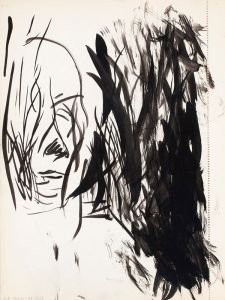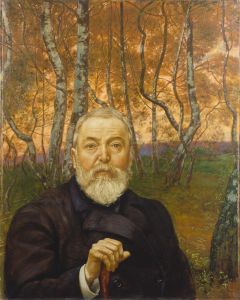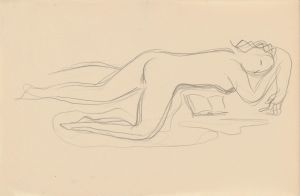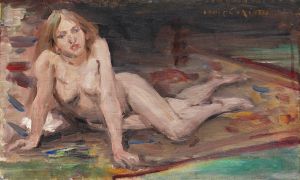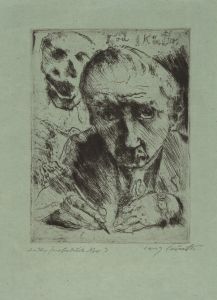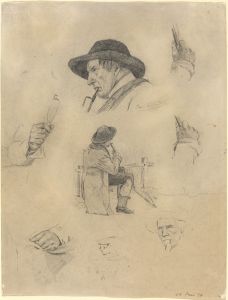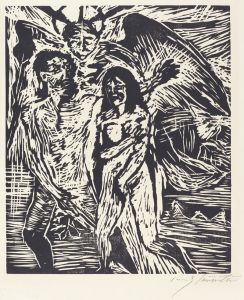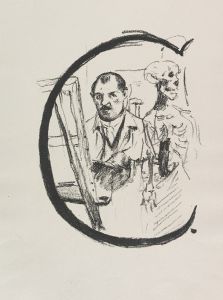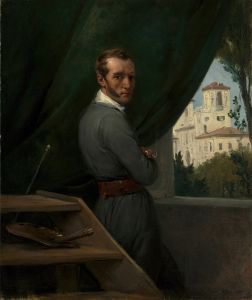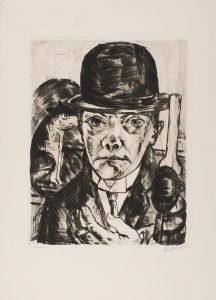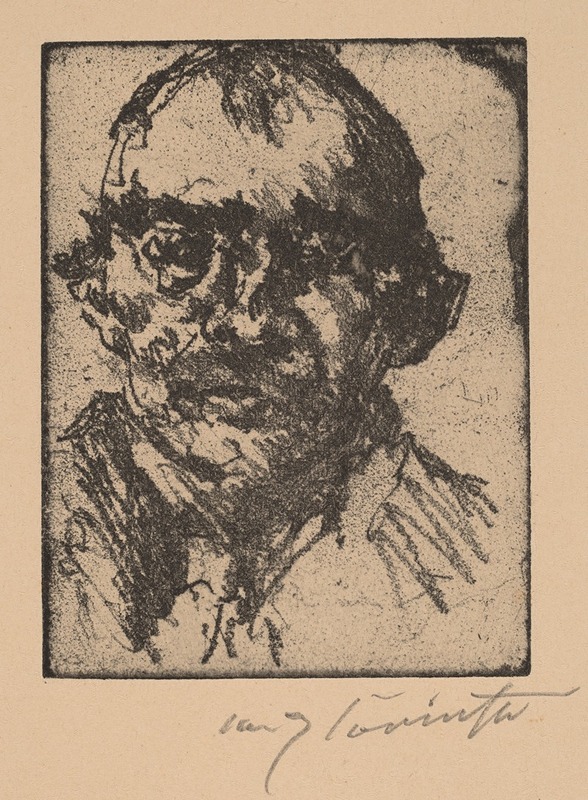
Self-Portrait
A hand-painted replica of Lovis Corinth’s masterpiece Self-Portrait, meticulously crafted by professional artists to capture the true essence of the original. Each piece is created with museum-quality canvas and rare mineral pigments, carefully painted by experienced artists with delicate brushstrokes and rich, layered colors to perfectly recreate the texture of the original artwork. Unlike machine-printed reproductions, this hand-painted version brings the painting to life, infused with the artist’s emotions and skill in every stroke. Whether for personal collection or home decoration, it instantly elevates the artistic atmosphere of any space.
Lovis Corinth was a prominent German painter and printmaker whose work bridged the styles of Impressionism and Expressionism. Among his extensive oeuvre, Corinth is well-known for his self-portraits, which provide insight into his evolving style and personal life. One of his notable self-portraits is "Self-Portrait with Skeleton," painted in 1896. This work is often highlighted for its introspective nature and its reflection on themes of mortality and identity.
Corinth was born on July 21, 1858, in Tapiau, East Prussia, which is now Gvardeysk, Russia. He studied art in Königsberg, Munich, and Paris, where he was exposed to various artistic movements and developed his unique style. Initially associated with the Munich Secession, Corinth later became a leading figure in the Berlin Secession, an art movement that sought to challenge the conservative art establishment in Germany.
"Self-Portrait with Skeleton" is a striking example of Corinth's ability to blend realism with expressive elements. In this painting, Corinth depicts himself standing next to a skeleton, a traditional symbol of death. The composition is both direct and confrontational, with Corinth gazing out at the viewer, creating a dialogue between the living and the dead. The use of the skeleton can be interpreted as a memento mori, a reminder of the inevitability of death, which was a common theme in art history.
The painting is characterized by its bold brushwork and dramatic use of color, which are hallmarks of Corinth's mature style. The loose, dynamic brushstrokes convey a sense of immediacy and emotional intensity, while the contrasting colors add depth and vibrancy to the composition. This approach reflects Corinth's transition from the more restrained techniques of Impressionism to the emotive qualities of Expressionism.
Corinth's self-portraits are often seen as a reflection of his personal struggles and triumphs. In 1911, he suffered a stroke that left him partially paralyzed, but he continued to paint with his left hand, demonstrating his resilience and dedication to his art. His later works, including self-portraits, often exhibit a heightened emotional intensity and a more abstract style, which some art historians attribute to the impact of his stroke.
Throughout his career, Corinth produced numerous self-portraits, each revealing different aspects of his personality and artistic development. These works not only document his physical appearance over time but also serve as a visual diary of his inner life and evolving artistic vision.
Lovis Corinth passed away on July 17, 1925, in Zandvoort, Netherlands. His legacy as a pioneering artist who navigated the transition between Impressionism and Expressionism continues to be celebrated in art history. His self-portraits, including "Self-Portrait with Skeleton," remain significant for their introspective quality and their exploration of universal themes such as identity, mortality, and the passage of time.





